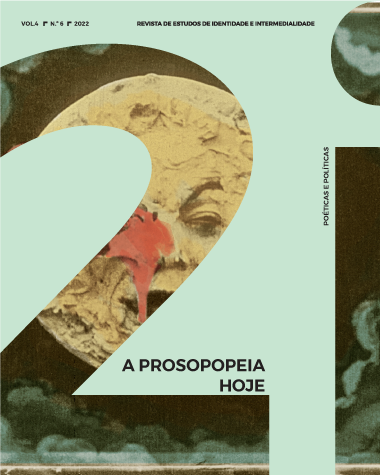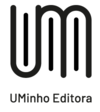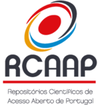Jaime was born here eight times already
Prosopopoeia and alterity in 'Jaime' by António Reis
DOI:
https://doi.org/10.21814/2i.4091Keywords:
Alterity, António Reis, Jaime Fernandes, Margarida Cordeiro, Portuguese Cinema, ProsopopoeiaAbstract
In this article, I propose an analysis of Jaime (1974), based on the concept of prosopopoeia – a way of attributing life to a dead person while simultaneously speaking through its voice. Directed by António Reis with the assistance of Margarida Cordeiro, the film revolves around Jaime Fernandes, his life, drawings and writings. Based on some of Jaime’s sequences, I conceive of the film as two-folded: on the one hand, it conjures Fernandes’s figure by resorting to his creations and biographical elements, making the dead alive and visible; on the other hand, Jaime does more than merely retrieving Fernandes’s memory. The material traces of his life are appropriated in a way so that the film channels Reis and Cordeiro’s topics of interest, developed in their later works, namely: the importance of marginal or non-normative modes of existence; the filmmaker’s questioning about forms of preserving and representing reality; their conception of cinema as a living archive, as well as a means of expression and reasoning; their conception of the world in terms of recurrences and returns, allowing the possibility of living and surviving through others.
Downloads
References
Alves Costa, C. (2012). Camponeses do Cinema: A Representação da Cultura Popular no Cinema Português entre 1960 e 1970. Lisboa: Faculdade de Ciências Sociais e Humanas da Universidade Nova de Lisboa.
Antunes, A. (1974, janeiro 27). «Jaime» ressuscita Jaime. Jornal do Fundão, 1, 8–9.
Armstrong, L. (1954). Satchmo: My Life in New Orleans. New York: Prentice-Hall.
Astruc, A. (1948). Naissance d’une nouvelle avant-garde: La caméra- stylo. Em Du stylo à la caméra—Et de la caméra au stylo: Écrits 1942-1984 (pp. 324–328). Paris: L’Archipel.
Bazin, A. (2000). Ontologie de l’image photographique. Em Qu’est-ce que le cinéma? (pp. 9–17). Paris: Editions du Cerf. (Publicação original 1958)
Bentham, J. (2008). Panopticon, or, the inspection-house. Gloucester: Dodo Press. (Publicação original 1791)
Castro, I. T. (2000). Conversa com Margarida Cordeiro. Em Cineastas Portuguesas 1874-1956. Lisboa: Câmara Municipal de Lisboa.
Coogan, M. D., Brettler, M. Z., Newsom, C. A., & Perkins, P. (2007). The new Oxford annotated Apocrypha: New Revised Standard version. Oxford, New York: Oxford University Press.
Dubuffet, J. (1949). L’Art brut préféré aux arts culturels. Em S. Lombardi & Collection de l’art brut (Eds.), Jean Dubuffet’s art brut: The origins of the collection = L’ art brut de Jean Dubuffet: Aux origines de la collection (pp. 27–31). Lausanne: Collection de l’art brut.
Epstein, J. (1974). La Lyrosophie. Em Écrits sur le cinéma, 1921-1953: Édition chronologique en deux volumes (pp. 15–23). Paris: Cinéma Club/Seghers. (Publicação original 1922)
Epstein, J. (1974). L’intelligence d’une machine. Em Écrits sur le cinéma, 1921-1953: Édition chronologique en deux volumes (pp. 255–334). Paris: Cinéma Club/Seghers. (Publicação original 1946)
Fernandes, J. (1980). Jaime. Lisboa: Fundação Calouste Gulbenkian. Serviço de Exposições e Museografia.
Focillon, H. (2012). Vie des formes suivi de Éloge de la main. Paris: PUF. (Publicação original 1934)
Foucault, M. (1975). Surveiller et punir: Naissance de la prison. Paris: Gallimard.
Freire, V. A. (2009). Panóptico, vanguardista e ignorado: O pavilhão de segurança do Hospital Miguel Bombarda. Lisboa: Livros Horizonte.
Harwood, R. W. (2008). I went down to St. James Infirmary: Investigations in the shadowy world of early jazz-blues in the company of Blind Willie McTell, Louis Armstrong, Don Redman, Irving Mills, Carl Moore, and a host of others, and where did this dang song come from anyway? Kitchener, ON: Harland Press.
Kracauer, S. (1997). Theory of film: The redemption of physical reality. Princeton, NJ: Princeton University Press. (Publicação original 1960)
Medeiros, M. (2016). Rostos em transição: A fotografia e o gesto de documentar o outro. Em A. F. Cascais (Ed.), Hospital Miguel Bombarda, 1968 (pp. 15–21). Lisboa: Documenta.
Molder, M. F. (2018b). Vi as redes por dentro. Em L. Lima (Ed.), Como o sol, Como a noite (pp. 26–31). Porto: Empresa Diário do Porto.
Monteiro, J. C. (1974). «Jaime» de António Reis—O inesperado no cinema português. Cinéfilo, 29, 22–32.
Morejón, N. (1993). Poemas de amor y muerte, 1993. Caravelle. Cahiers du monde hispanique et luso-brésilien, 61(1), 221–225.
Morin, E. (1956). Le cinéma ou l’homme imaginaire: Essai d’anthropologie sociologique. Paris: Minuit.
Moutinho, A. (1997). Entrevista a Margarida Cordeiro. Em A. Moutinho & M. G. Lobo (Eds.), António Reis e Margarida Cordeiro – A Poesia da Terra (pp. 8–25). Faro: Cineclube de Faro.
Petzoldt, R. (1974). Georg Philipp Telemann. London: Ernest Benn Ltd.
Pierotti, F. (2017). L’occhio del panopticon Filmare la pittura in Jaime di António Reis. Em C. Jandelli (Ed.), Filmare le arti: Cinema, paesaggio e media digitali (pp. 129–141). Edizioni ETS.
Reis, A. (1948). Luz. Porto: Portugália.
Reis, A. (1969, novembro 6). Trás-os-Montes. Jornal de Notícias, Suplemento Literário, 17–18.
Reis, A. (1974a). Arquitectura do Nordeste. Cinéfilo, 27, 24–25.
Reis, A. (1974c). Jaime. Celulóide, 204, 5–6.
Seabra, A. M. (1991, setembro 12). No rasto do cometa. Jornal Público, 27.
Smalley, J. (2000). Gesang der Jünglinge: History and Analysis. Programme note for concert series, Masterpieces of 20th-Century Electronic Music: A Multimedia Perspective. The Columbia University Computer Music Center, presented by Lincoln Center http://sites.music.columbia.edu/masterpieces/notes/stockhausen/GesangHistoryandAnalysis.pdf
Stockhausen, K. (1973). Stockhausen’s notes on the works. Em K. H. Wörner, Stockhausen: Life and work (pp. 30–77). London: Faber.
Referências audiovisuais
Baptista, T. (2022, de Abril). Para uma história material do cinema de Reis/Cordeiro. [Registo vídeo]. Consultado em https://www.youtube.com/watch?v=-WQeDxyXfQQ
Molder, M. F. (2018a). Causas que seguem os efeitos ou ameixas doiradas com orvalho. [Registo áudio] Lisboa: Escola Superior de Teatro e Cinema.
Oliver, K. (1961). Satchmo Plays King Oliver [LP]. Los Angeles: Audio fidelity.
Reis, A. (Realizador) (1974b). Jaime [Filme]. Centro Português de Cinema.
Reis, A., & Cordeiro, M. (Realizador) (1976). Trás-o-Montes. [Filme]. Centro Português de Cinema, Tobis Portuguesa, RTP.
Rocha, P. (Realizador) (1966). Mudar de Vida [Filme]. António da Cunha Telles.
Stockhausen, K. (1955-56). Gesang der Jünglinge [LP]. Alemanha: Deutsche Grammophon.
Telemann, G. P. (1963). Sonate B-Dur TWV 41:B3 [Recorded by F. Conrad, J. Koch, & H. Ruf]. BNF Collection.
Downloads
Published
How to Cite
Issue
Section
License
Copyright (c) 2022 Raquel Morais

This work is licensed under a Creative Commons Attribution-NonCommercial 4.0 International License.


.jpg)










